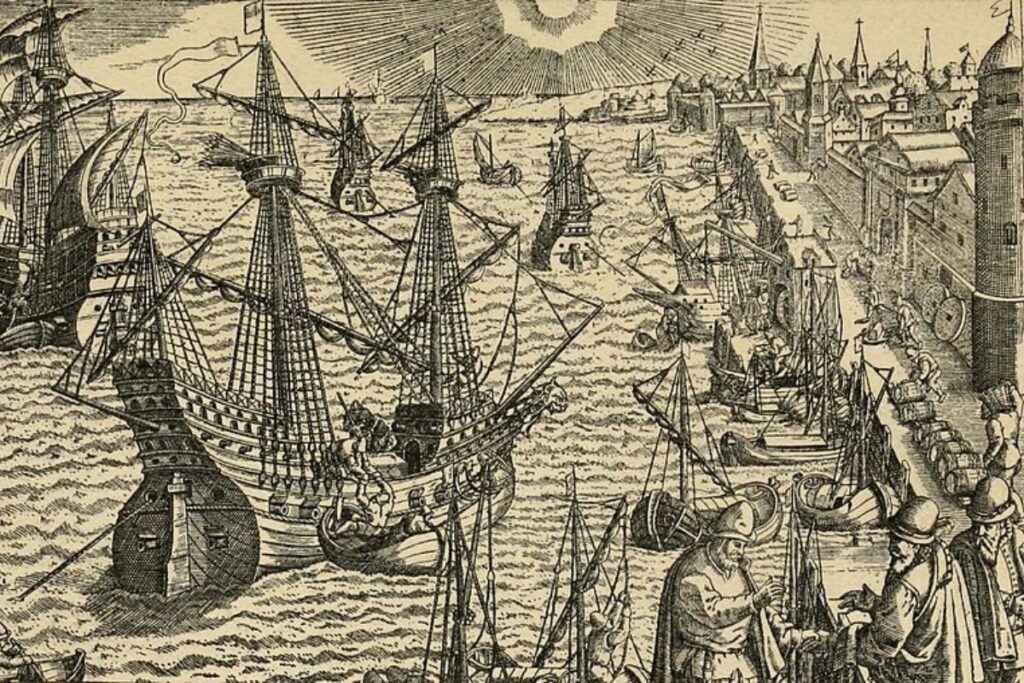Before GPS and Google Maps, explorers relied on sheer courage, a bit of guesswork, and some rough sketches to figure out what was out there. These daring individuals ventured into uncharted lands, seas, and skies, expanding our understanding of the world. Let’s take a look at ten incredible explorers who mapped the unknown and left their footprints on history.
Marco Polo
Marco Polo was the original travel influencer, journeying from Venice to Asia in the 13th century. His travels along the Silk Road took him to places like Persia, China, and India, where he marveled at the riches of Kublai Khan’s court. When he returned home, his book The Travels of Marco Polo opened Europe’s eyes to the wonders of the East. His accounts might have been a little exaggerated, but they inspired generations of explorers to follow in his footsteps.
Christopher Columbus
Christopher Columbus set sail in 1492, thinking he’d find a shortcut to Asia—but instead, he stumbled upon the Americas. While he wasn’t the first to discover the New World, his voyages kicked off centuries of exploration (and colonization) across the Atlantic. His four journeys changed the course of history, even if his navigation skills weren’t exactly on point. Love him or hate him, Columbus rewrote the map forever.
Ibn Battuta
Ibn Battuta wasn’t just an explorer—he was a wanderer who couldn’t sit still. Over 30 years in the 14th century, he traveled more than 70,000 miles across Africa, the Middle East, India, and even parts of China. His detailed accounts, written down in The Rihla, paint a vivid picture of life in the medieval world. If there was a frequent traveler card back then, he would’ve had all the perks.
Ferdinand Magellan
Magellan was the guy who proved you could sail all the way around the world—though he didn’t live to finish the trip. In 1519, he set out with five ships, hoping to find a western route to the Spice Islands. While Magellan was killed in the Philippines, his crew completed the first circumnavigation of the globe in 1522. His journey showed just how vast (and round!) our world really is.
Zheng He
Zheng He was a 15th-century Chinese explorer who sailed giant treasure ships across the Indian Ocean. He commanded massive fleets on seven voyages, visiting places like Africa, Arabia, and Southeast Asia. Unlike other explorers, he wasn’t looking to conquer—he was all about diplomacy and showing off China’s power. His journeys left a legacy of cultural exchange that’s still celebrated today.
James Cook
Captain James Cook was the ultimate overachiever of the 18th century, mapping vast stretches of the Pacific Ocean. He explored Australia, New Zealand, and Hawaii, putting them on European maps for the first time. Cook’s voyages weren’t just about discovery—they also advanced science, thanks to the botanists and artists who joined him. While his life ended tragically in Hawaii, his maps set the standard for accuracy and detail.
Sacagawea
Sacagawea was the unsung hero of the Lewis and Clark expedition, guiding the team through uncharted American territory in the early 1800s. As a Shoshone woman, she helped them communicate with Native American tribes and find crucial resources. Oh, and she did all this while carrying her infant son. Without her expertise, the journey might have been a disaster, and her contributions paved the way for westward expansion.
Roald Amundsen
Roald Amundsen was a Norwegian explorer who loved icy adventures, becoming the first person to reach the South Pole in 1911. He beat his British rival, Robert Falcon Scott, by using dogsleds and meticulous planning to survive the harsh Antarctic conditions. Amundsen didn’t stop there—he also explored the Northwest Passage and was one of the first to fly over the Arctic. If there’s a “coolest” explorer, he takes the title—literally.
Mary Kingsley
In the late 19th century, Mary Kingsley broke every rule by exploring West Africa on her own. She traveled through dangerous swamps, climbed mountains, and even survived encounters with crocodiles—all while wearing Victorian dresses. Her travels weren’t just for adventure; she studied African cultures and championed their rights against colonial stereotypes. Kingsley’s fearless spirit challenged the expectations of her time and inspired future explorers.
Yuri Gagarin
Yuri Gagarin wasn’t exploring Earth—he was exploring the great unknown of space. In 1961, he became the first human to orbit the planet aboard the Soviet spacecraft Vostok 1. His historic flight proved that humans could survive space travel, sparking the Space Race and inspiring dreams of interplanetary exploration. Gagarin’s bravery showed us that the final frontier was closer than we thought.
From mapping continents to touching the stars, these explorers pushed boundaries and changed how we see the world. Their journeys remind us that curiosity and courage can take us to incredible places—even the ones we never knew existed.

